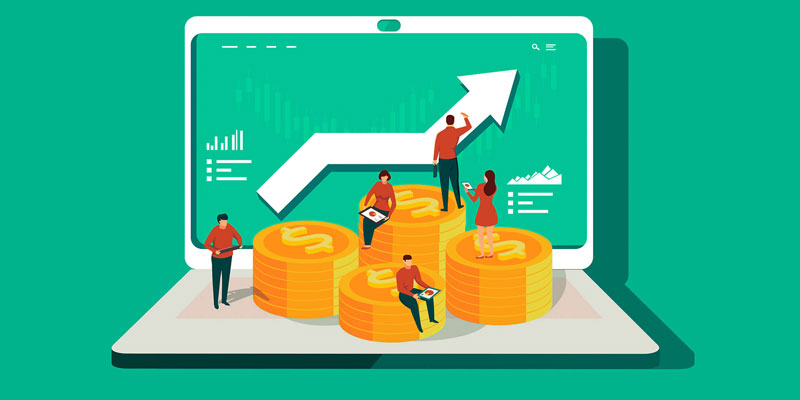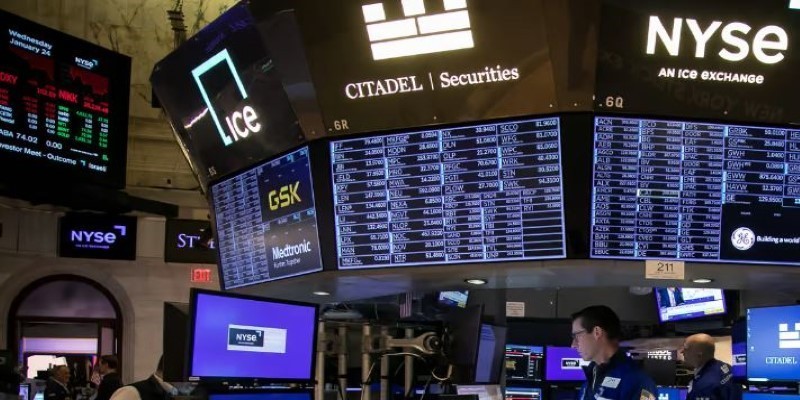S and P’s Downgrade of Azul: A Closer Look at the Airline's Debt and Financial Uncertainty
Nov 12, 2024 By Sid Leonard
Azul, one of Brazil's leading airlines, recently faced a significant shift in its financial landscape after credit agency S&P downgraded its credit rating, citing a "default-like" debt exchange as a key factor. The downgrade places Azul in a more precarious financial position, signalling underlying challenges within the company's restructuring efforts to manage its substantial debt.
For a volatile economic operator such as the airline, the new rating will alter the trend course and affect not only its stakeholders but also industry competitors in all aspects. What does this new rating mean to Azul, what has caused the S&P to change ratings on this airline, and what other implications on Brazil's air transport industry from this article?
The financial pressure facing Azul
It has to deal with the enormous burden of debt while keeping its operating costs under check. Additionally, pressures from the recession of their economy coupled with increasing operating costs have left Azul, like so many airlines of the world, facing dwindling air travel demand amidst the worst pandemic. However, having entered the restructuring process under debt, its aim now is to restructure itself to stabilize ongoing operations based on its debts and flow of cash as it currently operates.
Nevertheless, S&P's latest move, lowering Azul's credit rating, puts a focus on the fact that managing Azul's debt is indeed hard. Questions have arisen about whether Azul would be able to run its operations without weakening its financial health. Such a characterization of S&P over Azul's recent debt exchange as "default-like" brings in a serious problem.
For them, this might not be an outright default from the debt restructuring arrangement but definitely indicates that Azul cannot meet its original obligations and will be asking for some form of concession from its creditors. This brings with it increased risk to S&P, thus bringing on the downgrade of the airline to a higher-risk financial category. An airline falls under this category and feels the impact of future financing trouble and higher borrowing costs that strain the airline's long-term viability.
Understanding the Default-Like Debt Exchange
S&P described the moves done by Azul as "default-like" because of what the debt exchange entails in terms. The airline proposed to delay payment or change it, meaning that it was giving room to itself but reducing the initial amount of returns that the creditors could get. For S&P, it was financially distressed and a market indicator that the company's circumstances were dangerous. This is not considered a full default but does indicate financial stress, for which it has been downgraded to a "selective default".

The "default-like" label can have substantial consequences for Azul. It impacts investor confidence, casting doubt on the airline's ability to rebound from its debt challenges. Stakeholders might view this downgrade as a sign of deeper financial instability, which could affect stock prices and overall company valuation. Additionally, other rating agencies might follow suit, which could trigger further downgrades and complicate Azul's efforts to secure favourable financing in the future.
Impact on Brazils Airline Sector
Azul's financial issues and the resulting credit rating downgrade don't occur in a vacuum; they also carry potential repercussions for Brazil's broader airline industry. Airlines within Brazil face unique economic challenges, including volatile exchange rates, high fuel costs, and a post-pandemic demand recovery that has been slower than in some other markets. Azul's downgrade is a cautionary indicator, signalling the tough operating environment that other Brazilian carriers also navigate.
For competitors like LATAM and Gol, Azuls downgrade could create opportunities to capture more market share, especially if Azul finds it challenging to maintain competitive pricing or expand routes. On the other hand, Azuls financial instability could lead to reduced connectivity in certain regions, affecting passenger choices and accessibility. From an investor perspective, the downgrade also introduces heightened caution around Brazilian airlines, which might impact funding options and valuations across the sector.
Another consideration is the regulatory perspective. The downgrade could attract attention from Brazilian regulatory bodies focused on maintaining stability within the airline industry. If Azuls financial condition worsens, regulators might step in, either encouraging Azul to pursue further restructuring options or, in a more severe scenario, implementing policies to prevent negative fallout in the broader sector. This regulatory influence could shape Azuls future decisions as it contends with the repercussions of its recent downgrade.
Azuls Road to Recovery: Challenges and Possible Solutions
The path forward for Azul remains complex. With a downgraded credit rating, Azul faces limited flexibility in accessing additional credit and might be forced to find alternative solutions to fund its operations. To regain stability, Azul could consider several approaches:
Increased Cost Management:
Azul may need to intensify its focus on reducing operational costs to align expenses with its reduced cash flow. This could mean streamlining routes, negotiating more favourable contracts with suppliers, or implementing cost-saving technologies.
Debt Refinancing or Further Restructuring:
Azul might explore renegotiating its debt terms with creditors, aiming for an agreement that balances financial sustainability with creditor interests. However, given the default-like nature of its recent exchange, this may be challenging without further rating repercussions.
Equity Infusion:

Another option could be securing an equity infusion, either through attracting new investors or through existing shareholder contributions. However, a successful equity raise will depend on convincing potential investors of Azuls long-term recovery prospects.
Strategic Partnerships:
Collaborating with other airlines or industry partners could provide Azul with access to new resources and operational synergies. Partnerships might allow Azul to diversify its revenue streams or access new markets, improving its competitive stance despite financial constraints.
Conclusion
Azul's credit rating downgrade by S&P underscores the financial pressures facing the airline, with its "default-like" debt exchange highlighting significant debt management challenges. As Azul navigates limited financing options and rising industry demands, its path to recovery will rely on strategic financial restructuring. This downgrade holds broader implications for Brazil's airline industry, emphasizing the need for effective debt strategies and adaptability. Azul's response could not only impact its future but also set a standard for resilience within the Brazilian aviation sector.

What Does Chime Do?

From Beans to Business: The Journey of Starting a Coffee Shop

Dividend Rate and Dividend Yield: What’s the Difference?

Gravestone Doji Pattern: Mastering This Powerful Trading Signal

Meta's Earnings Miss Hits Tech Sector Hard: A Market Overview

Chip Shortage May Dent Supplies of Credit and Debit Cards: A Complete Overview

The Review of Kemper Life Insurance

Who's Excused from Paying Social Security Tax? All You Need To Know

How to Evaluate a Stock Using the P/E Ratio and the PEG

